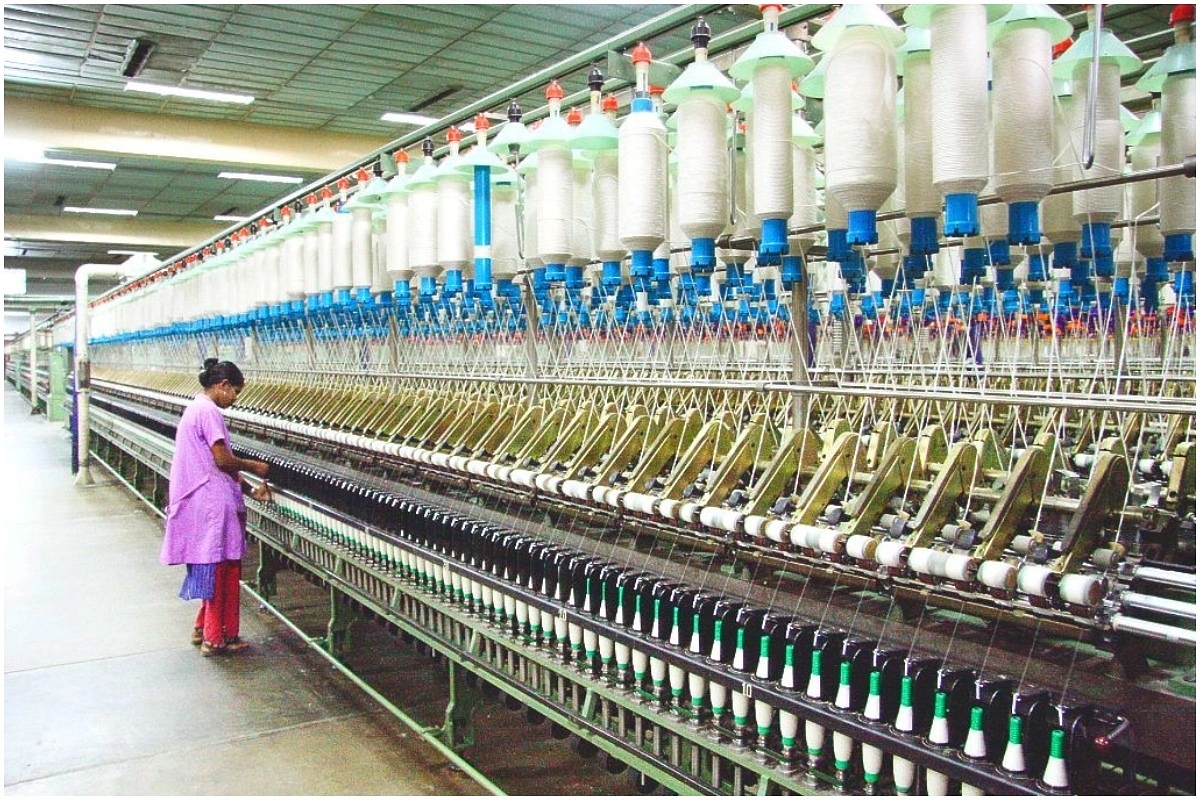News Brief
Textile Stocks On A Roll After Three Years Of Underperformance. Should You Invest?
- Increasing investor optimism has helped textile stocks hit an all-time high.

A textile factory.
Multiple textile stocks have hit all-time high in recent days as investors become more optimistic on the sector. Stocks of textile companies like Page Industries, KPR Mills, Ambika Cotton, Lux Industries, Welspun India and Indo Count Industries have risen anywhere between 81 per cent and 260 per cent in the past one year.
In contrast, the broad indices have given around 50 per cent returns during the same period. Similarly, Lakshmi Machine Works, a major manufacturer of textile machinery, has seen its stock double in one year.
The entire sector had been an underperformer for the last three years as it struggled with cheap imports, a consumption slowdown, over capacity and several other issues. Countries like China, Bangladesh and Vietnam were flooding the global markets with cheap products making life difficult for Indian textile companies. The textile sector in India is relatively inefficient, fragmented, and has a higher cost of labour.
Indian textile companies were suffering from compressed margins and declining revenues. For instance, Welspun India saw its revenue decline from Rs 6,638 crore in financial year 2017 (FY17) to Rs 6,050 crore in FY18. Similarly, Indo Count Industries saw revenue fall from Rs 2,153 crore in FY17 to Rs 1,859 crore in FY18. Some leveraged players like Alok Industries faced bankruptcy proceedings during the same period.
However, today global consumption is rising. In addition, buyers are adopting a “China plus one” strategy as a means to lower the reliance on China. Such a strategy would aid the Indian textile sector, as global buyer shift from China and look for other suppliers.
The large Indian manufacturers have strong systems in place for traceability and addressing environmental, social and governance (ESG) concerns. As a result, Indian textile imports have risen 50 per cent year-on-year for the month of August.
Another driver of growth could be the production linked incentive (PLI) programme that was introduced to incentivise production of man-made fibres (MMF). The companies that participate would receive subsidies cumulatively worth Rs 10,683 crore.
Indian companies have so far focused on the cotton and cotton apparel sector. The MMF market is quite huge with the US alone importing Rs 3 lakh crore worth of the material annually. Currently, India has a minute share of the market.
The PLI scheme would allow Indian companies to become competitive with the Vietnam and Bangladesh-based manufacturers. These countries have large integrated plants with low manufacturing costs, allowing them to undercut India in the global markets. Around 35 Indian companies including Welspun India, Reliance Industries, Vardhaman Textiles, Arvind, Trident, and several others have indicated interest in participating in the scheme.
Nevertheless, some analysts have warned investors against investing in a cyclical sector when it is trading at an all-time high. Such sectors usually have low barriers to entry, no product differentiation, and keep swinging between periods of inventory shortages and gluts. As the competition in the space increases, margins might see a decline.
Introducing ElectionsHQ + 50 Ground Reports Project
The 2024 elections might seem easy to guess, but there are some important questions that shouldn't be missed.
Do freebies still sway voters? Do people prioritise infrastructure when voting? How will Punjab vote?
The answers to these questions provide great insights into where we, as a country, are headed in the years to come.
Swarajya is starting a project with an aim to do 50 solid ground stories and a smart commentary service on WhatsApp, a one-of-a-kind. We'd love your support during this election season.
Click below to contribute.
Latest